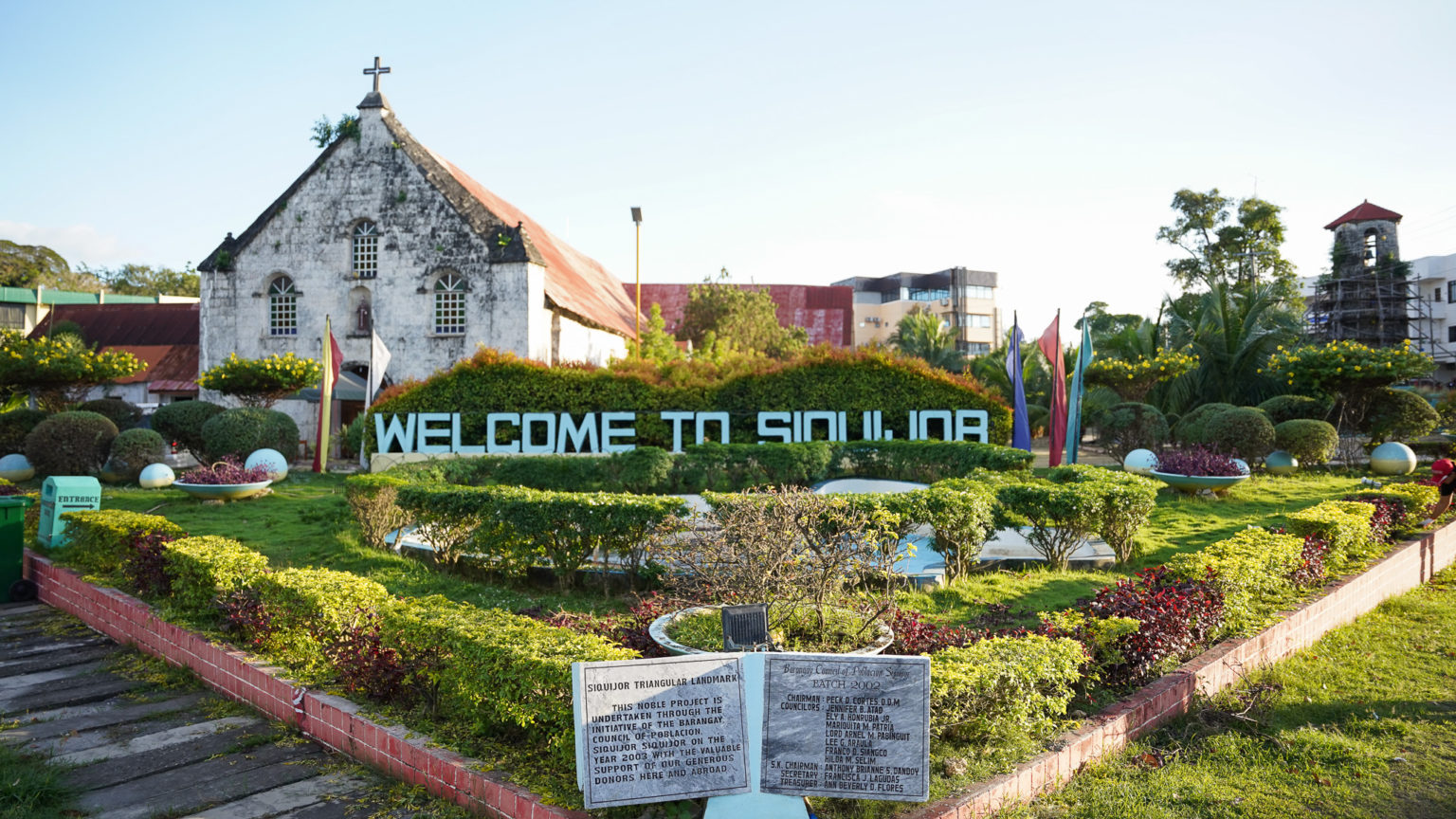 Located in the Central Visayas region, Siquijor is the third smallest province in the Philippines. Legend tells of a “King Kihod” as the source of the island’s name. Old residents also called the island “Katugasan” from the Molave (“tugas”) trees that cover the hill. Another version also tells of a priest who came to the island by sailing and when he went back to Bohol he was asked by the people at the beach where he had been, and he answered “Sequor” which means to follow the waves, and was misheard by them as Siquijor.
Located in the Central Visayas region, Siquijor is the third smallest province in the Philippines. Legend tells of a “King Kihod” as the source of the island’s name. Old residents also called the island “Katugasan” from the Molave (“tugas”) trees that cover the hill. Another version also tells of a priest who came to the island by sailing and when he went back to Bohol he was asked by the people at the beach where he had been, and he answered “Sequor” which means to follow the waves, and was misheard by them as Siquijor.
Discovered by Esteban Rodriguez and Juan Aguirre of the Legaspi Expedition in 1565, it was known to the Spanish conquistadors as Isla de Fuego or the “Island of Fire” for Siquijor was literally lit by fireflies at night swarming the branches of its molave trees.
Siquijor, the first parish, was established in1783 under the administration of secular clergymen. In the years that followed until 1877, the parishes of Canoan (Larena), Tigbawan (Lazi), Makalipay (San Juan) and Cangmeniac (Maria) were founded by Augustinian and Recollect priests.
From 1854 to 1892, it was administered under the politico-militar province of Bohol. In 1892, it became a part of Negros Oriental and was made its sub-province in 1901. On September 17,1971, Siquijor was created as a province by RA 6396 with Larena as the capital. In 1972 or a year later, the capital was transferred to Siquijor town by Proclamation 1075.
Since the olden times people believe the island to be mysterious because of the presence of folk healers and their practices of spiritualism and up to these days people still come to witness the preparation of the brews and really try the medicinal powers of the herbs, from health problems to the potions for love and favor.
Above all, it’s the Siquijodnon’s welcoming smile and warmth that make every visitor’s stay delightful and unforgettable.
| Location: | Central Visayas Region |
| Land Area: | 343.50 square kilometers |
| Population: | 103,395 as of 2020 PSA Census |
| Capital Town: | Siquijor, Siquijor |
| No. of Municipalities: | 6 |
| No. of Barangays: | 134 |
| Languages: | The main language spoken in the island province is Cebuano, with Tagalog and English often used as second languages. |
| Currency: | Philippine Peso (₱), Dollar Currency recognized *Transact with an authorized money changer only to maximize the value of your money |
| Time zone: | Philippine Time (PHT) UTC 0+8:00 |
| Average Temperature: | Average temperature of Siquijor is 28°C |
| Topography: | Siquijor is the smallest of the four provinces in the Central Visayas. Its towns are on the narrow flood plains and deltas around the coast. Most of the interior portion of the island is either hilly or mountainous, rising to a central peak is Mt. Bandilaan, at 557 meters above sea level. |
| Climate: | Like the rest of the Philippines, Siquijor has a tropical climate. Wet season is between June and October and the dry season is from November to May. The best time for tourists to visit is between December to May. However, due to climate change, the rainy season can be hot sometimes and vice versa. |
| Tourist Arrival: | 85, 713 (Foreign 51%) 82,653 (Domestic 49%) 168, 366 total as of 2019. |
1. Siquijor is a zero waste province. Single use plastic is strictly prohibited. Do bring your own water tumbler always. Segregate waste and dispose properly.
2. Wear face mask always in public places.
3. Observe/obey traffic rules and regulations.
4. Smoking in public places especially at the beach is prohibited.
5. Don’t leave your valuables unattended.
6. Wear decent/appropriate clothes when entering churches, banks, markets, in the streets and other public places.
Siquijor Province is comprised of six municipalities namely Siquijor (the island’s capital town), San Juan, Lazi, Maria, Enrique Villanueva and Larena.
 The capital town of Siquijor is located southwest of the island, bounded by Tañon Strait, the towns of Lazi in the southeast, Larena in the northeast and San Juan in the south. Certain stores in Siquijor offer assorted pastries and native gift items. Siquijor celebrates its annual town fiesta every 4th of October in honor of its patron saint, St. Francis of Assisi. The Dilaab Festival or Fire Festival falls to commemorate Siquijor as Isla de Fuego as what it is called before by Spanish conquistadors.
The capital town of Siquijor is located southwest of the island, bounded by Tañon Strait, the towns of Lazi in the southeast, Larena in the northeast and San Juan in the south. Certain stores in Siquijor offer assorted pastries and native gift items. Siquijor celebrates its annual town fiesta every 4th of October in honor of its patron saint, St. Francis of Assisi. The Dilaab Festival or Fire Festival falls to commemorate Siquijor as Isla de Fuego as what it is called before by Spanish conquistadors.
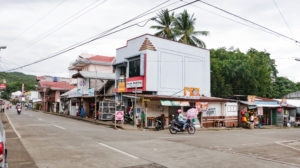 Siquijor Port is the main gateway of tourists since ships and fast crafts travelling from Dumaguete City anchors here.
Siquijor Port is the main gateway of tourists since ships and fast crafts travelling from Dumaguete City anchors here.
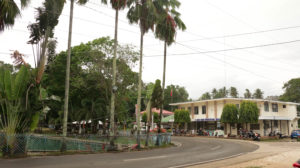 Once part of the sprawling town of Siquijor as a village called Capilay, San Juan came on its own as a municipal unit on November 6, 1863. San Juan rivals Lazi and the beaches of Maria in the grandeur of its diverse natural attractions. San Juan is the tourism center of the island.
Once part of the sprawling town of Siquijor as a village called Capilay, San Juan came on its own as a municipal unit on November 6, 1863. San Juan rivals Lazi and the beaches of Maria in the grandeur of its diverse natural attractions. San Juan is the tourism center of the island.
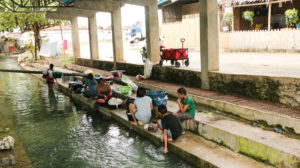 Bugwas Festival highlights the town fiesta every 28th of August, the feast of the town’s patron saint, St. Augustine. Bugwas means a gush of water from the ground, symbolizing a fruitful harvest for the farmers and a rich catch for the fishermen of San Juan.
Bugwas Festival highlights the town fiesta every 28th of August, the feast of the town’s patron saint, St. Augustine. Bugwas means a gush of water from the ground, symbolizing a fruitful harvest for the farmers and a rich catch for the fishermen of San Juan.
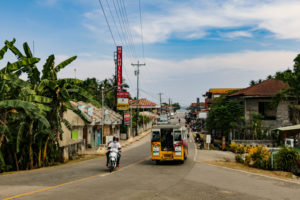 At the southern end of Siquijor lies the captivating town of Lazi. Founded by the Recollect friars in 1857, the town was originally known as Tigbawan, a name derived from a plant known to grow along its bays. It is the second town south of the capital, after San Juan.
At the southern end of Siquijor lies the captivating town of Lazi. Founded by the Recollect friars in 1857, the town was originally known as Tigbawan, a name derived from a plant known to grow along its bays. It is the second town south of the capital, after San Juan.
Lazi is blessed with the marvelous confluence of its natural wonders and the artistry of its people. Known to the locals as the Music Town, this once sleepy pueblo has awakened from its slumber with the rousing ensemble of its first concerto in a family of musicians, the Lumacads. Named the Grand Old Man of Music in Lazi, the late Telesforo Lumacad, a former mayor and councilor of the town and the patriarch of the Lumacad family, formed the town’s very first orchestra: the Island Swing Orchestra in the 1950s. Since then, music has been part of the heart of Lazihanons.
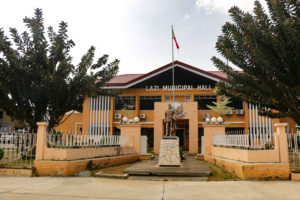 The town fiesta falls on May 15 honoring St. Isidore the Farmer. It is also the occasion of the Saging (Banana) Festival, a street parade showcasing the usefulness of the fruit in the lives of the people.
The town fiesta falls on May 15 honoring St. Isidore the Farmer. It is also the occasion of the Saging (Banana) Festival, a street parade showcasing the usefulness of the fruit in the lives of the people.
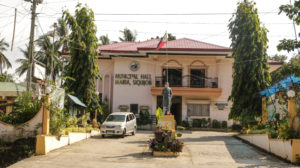 In a certain village in the island, there lived a beautiful woman called Kangmenia. Aside from her beauty, she was well-loved by the people for she was so kind. It was in her honor that they named the village after her. A parochial town was constituted by the Recollects in 1880 within the village and dedicated it to the Blessed Virgin Mary under the name of Our Lady of Divine Providence. That same year, the name Kangmenia was changed by the Spanish friars to Maria in honor of the Blessed Virgin, a change that the people did not find hard to accept.
In a certain village in the island, there lived a beautiful woman called Kangmenia. Aside from her beauty, she was well-loved by the people for she was so kind. It was in her honor that they named the village after her. A parochial town was constituted by the Recollects in 1880 within the village and dedicated it to the Blessed Virgin Mary under the name of Our Lady of Divine Providence. That same year, the name Kangmenia was changed by the Spanish friars to Maria in honor of the Blessed Virgin, a change that the people did not find hard to accept.
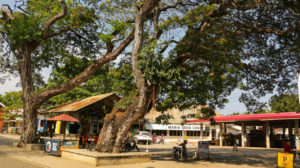 Maria celebrates the Lubi Festival, a lively and colorful cultural tradition held every third week of May, showcasing the various products and uses of coconut-anything from its fruit to its palms and sturdy trunk.
Maria celebrates the Lubi Festival, a lively and colorful cultural tradition held every third week of May, showcasing the various products and uses of coconut-anything from its fruit to its palms and sturdy trunk.
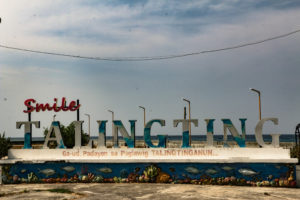
Once a barrio of the municipality of Larena, the town got its name from a former governor of Negros Oriental, Governor Enrique Villanueva, who was instrumental in creating the municipality on January 1, 1925. Formerly known as Talingting, the place is home to a specie of bird, fish and tree that all bear the name Talingtingon.
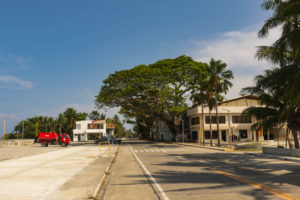
If you are lucky, you can catch the Pamukad, a fish-harvesting activity of the local fishermen that seemingly takes on a ritualistic dimension. Pamukad comes from the Visayan word, bukad which means to catch fish. At the end of the Pamukad, the fishermen are welcomed in the shores by waiting men, women and children to share in the catch. Enrique Villanueva also offers native rice cakes called bibingka from Pari-an and the homey pan bisaya (native bread) of Camogao and Libo.
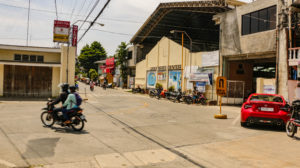 Formerly known as Canoan, the Municipality of Larena was the seat of government of the Province of Siquijor. The province’s major port is located here making the town as the center of commerce and trade. The presence of big commercial establishments, banks and the Siquijor State College makes Larena vibrant and going.
Formerly known as Canoan, the Municipality of Larena was the seat of government of the Province of Siquijor. The province’s major port is located here making the town as the center of commerce and trade. The presence of big commercial establishments, banks and the Siquijor State College makes Larena vibrant and going.
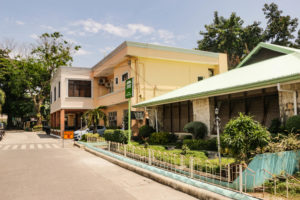 Larena celebrates Cano-an Festival every 1st of May thru a culinary festival dubbed as “Kan-anan ni Juan”. The following days May 2 & 3 is the town’s annual fiesta in honor of St. Vincent Ferrer.
Larena celebrates Cano-an Festival every 1st of May thru a culinary festival dubbed as “Kan-anan ni Juan”. The following days May 2 & 3 is the town’s annual fiesta in honor of St. Vincent Ferrer.

SIQUIJOR TOURISM OFFICE
Provincial Tourism Office
0955 370 6991
[email protected]
Atty. Dale Louis D. Tudtud
Provincial Tourism Officer
[email protected]
Mei Ling Quezon-Brown
Vice Governor
Traveler’s Assistance Office
0915-906-9093
[email protected]m
WE WANT TO HEAR FROM YOU
Fill out our Feedback Form for Inquiries, Suggestions, and Complaints. Click here
copyright © 2023